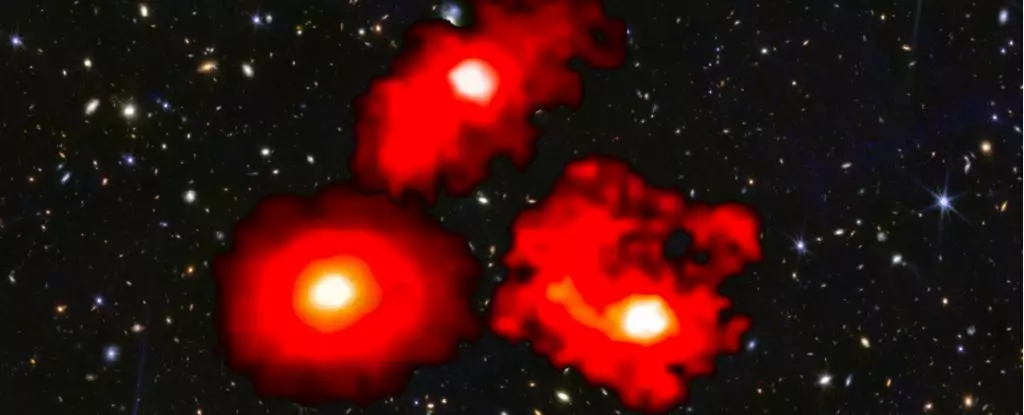The birth and evolution of galaxies have long intrigued astronomers, with experiences bolstered by advanced technologies like the James Webb Space Telescope (JWST). Recent discoveries have unveiled three galaxies, dubbed ‘red monsters,’ which appear to challenge established theories surrounding galaxy formation. As these anomalies reveal themselves, they have fueled discussions about the nature of the early universe and how galaxies can emerge in ways that current models do not anticipate. They compel us to reassess the context of cosmic evolution in the first billion years post-Big Bang, where numerous questions still linger.
The ‘red monsters’ discovered are colossal—remarkably comparable in size to our own Milky Way—but their presence shortly after the Big Bang is perplexing. As noted by astrophysicist Ivo Labbé, these galaxies represent a scenario akin to discovering a toddler weighing an extraordinary 100 kilograms: they exist despite theoretical expectations suggesting otherwise. These massive galaxies are pivotal in understanding cosmic dawn when the universe was still in its infancy. This contradicts long-standing galaxy formation theories that suggest galaxies would not reach substantial mass so quickly, thus prodding a re-evaluation of our comprehension of cosmic evolution.
Traditionally, models suggest that galaxies develop from dark matter halos, gradually accumulating baryonic matter in a protracted process. The implications are profound; if galaxies inflate their masses too rapidly, it necessitates a revised understanding of stellar formation rates and the processes that govern them. Observations from the JWST have began to illuminate these initial cosmic structures, expanding our observational capabilities beyond established parameters. If substantial galaxies were indeed forming sooner than expected, what mechanisms fueled this unexpected progress? The implications range widely, from dark matter behaviors to the interactions between baryonic matter and cosmic forces.
The JWST has revolutionized our capability to analyze the distant universe, utilizing infrared wavelengths to pierce through the cosmic fog, making discoveries once considered the stuff of science fiction. This advanced telescope provides evidence that the early universe contained illuminated regions teeming with galaxies that were, up until its launch, nearly impossible to observe. Yet with these massive discoveries, the paradox of their existence remains profoundly interesting. Some theories propose that these gigantic objects appear larger due to the intense luminosity emitted from stellar material surrounding their black holes. This overwhelming brightness might mislead us into perceiving greater mass than is truly present.
Among the plethora of research being conducted is the FRESCO program, which aims to deliver accurate distance and mass measurements for galaxies amidst the cosmic dawn. Findings from Mengyuan Xiao and colleagues challenge long-held beliefs about star formation efficiency. The three massive galaxies studied indicate that star formation rates are astonishingly high—two to three times greater than other active galaxies currently being observed. The implications for our understanding of star formation feedback mechanisms are vast, suggesting that theories must expand to accommodate the dynamics at play during the universe’s early phase.
What seems to be a significant setback for existing galaxy formation models also signals an opportunity for scientific advancement. The high rates of star formation contradict the established notion that processes such as supernovae and black hole frenetic activity limit star production. As Labbé highlights, a serious reevaluation is necessary: current models do not yet encompass how galaxies might overcome these restraining forces during the early universe’s chaotic formation period. The exploration of these ‘red monsters’ ignites inquiries that challenge the status quo, pushing the boundaries of astrophysics towards a more robust and nuanced understanding of galaxy formation.
As we strive to unlock the universe’s many mysteries, the discovery of ‘red monsters’ in the guise of massive early galaxies offers both a challenge and a tantalizing glimpse into the fabric of cosmic evolution. Each new finding from observations, particularly from sophisticated tools like JWST, encourages the scientific community to adapt and innovate. These revelations remind us just how little we truly understand about the formative epochs of the universe. Acceptance of this uncertainty fosters an environment rich for discovery, propelling us towards a clearer comprehension of our cosmos, its origins, and potential futures.


Leave a Reply